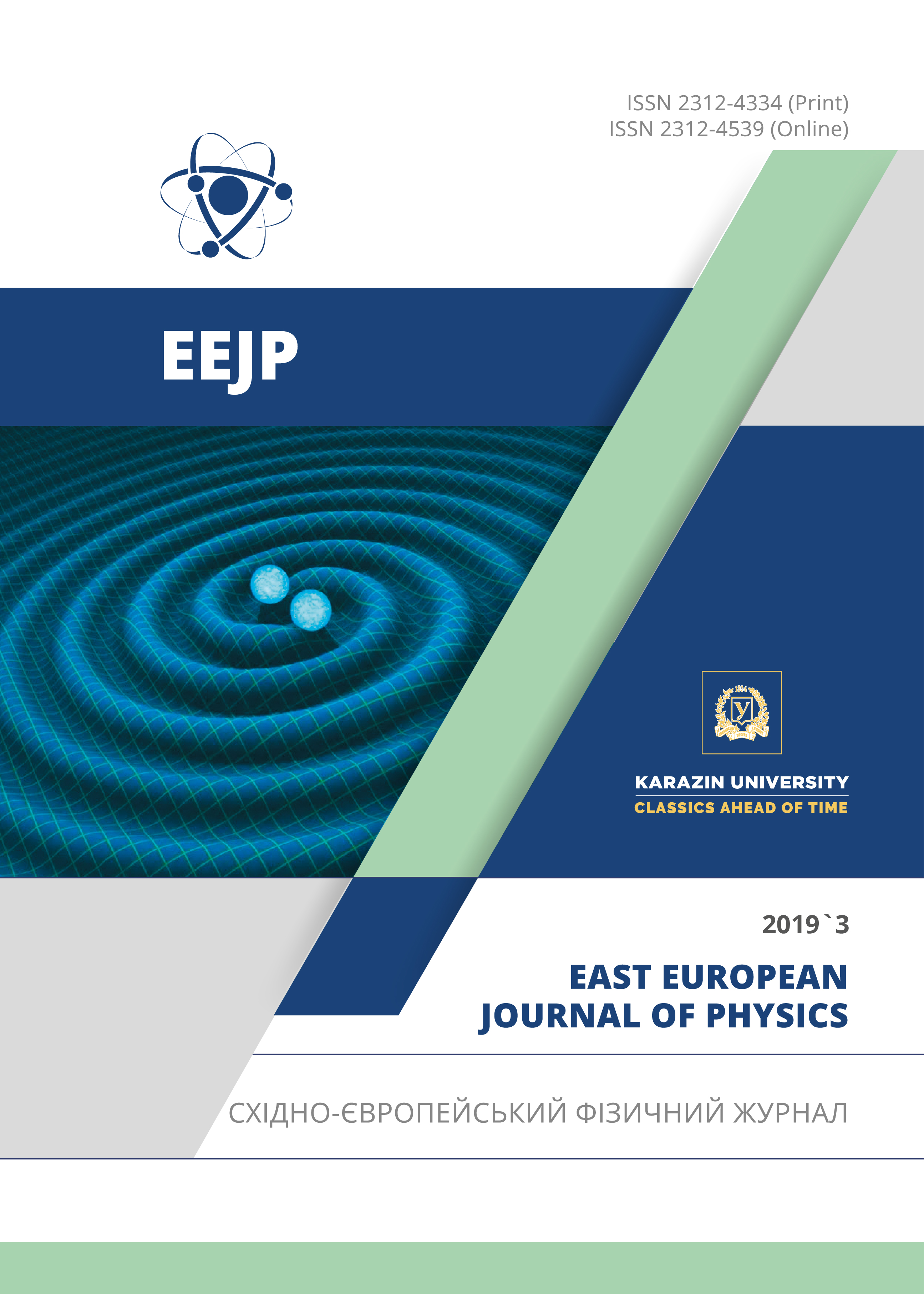Long-Lived Banana Orbit Formation of Suprathermal Electrons During MHD Spikes in Runaway Tokamak Discharges
Abstract
The secondary runaway electrons generation is the process in which already existing high energy runaway electrons knock out thermal plasma electrons directly into the runaway region by close Coulomb collisions. Such knocked-on electrons are immediately accelerated to ultrarelativistic velocities, since in the runaway region the toroidal electric field force overcomes the collisional friction force with thermal plasma particles. The avalanche of runaway electrons with mega-electron-volt energy emerges, hit of which with the construction elements of large-scale tokamaks and future international tokamak ITER can lead to catastrophic consequences. Due to its importance, this phenomenon is being actively studied both theoretically and experimentally in leading thermonuclear fusion centers. It is known that during secondary generation, the value of the transversal component of knocked-on electrons momentum with respect to the confining magnetic field may be significantly higher than the longitudinal one: p⊥ >> p∥. Thus, conditions for knocked-on electron trapping in a non-uniform tokamak magnetic field occur (banana orbits). Such electrons can no longer be accelerated by the inducted toroidal electric field to high energies, avalanche formation is partially suppressed. The question is how long this population of knocked-on and trapped electrons exists. In the presented paper, it is shown the additional possibility of formation and existence of such long-lived banana orbits of suprathermal electrons under conditions of plasma MHD activity when MHD instability spikes induced the strong burst of the toroidal electric field that results in the abrupt growth in these knocked-on and trapped electrons. This phenomenon is considered for the recent low-density EAST (Institute of Plasma Physics, Chinese Academy of Sciences, Hefei, China) tokamak quasistationary runaway discharges. Long-lived trapped electrons (p⊥ >> p∥) also have an influence on the intensity of ECE emission. The considered phenomenon is important for correct interpretation of the runaway experiments on present-day tokamaks.
Downloads
References
ITER Physics Basis, Chapter 3: MHD stability, operational limits and disruptions, Nucl. Fusion 39, 2175 (1999), https://doi.org/10.1088/0029-5515/39/12/303.
Progress in the ITER Physics Basis, Nucl. Fusion 47, S128 (2007), https://doi.org/10.1088/0029-5515/47/6/S03.
Yu. A. Sokolov, JETP Letters, 29, 218 (1979).
N.T. Besedin and I.M. Pankratov, Nucl. Fusion, 26, 807 (1986), https://doi.org/10.1088/0029-5515/26/6/009.
C. Paz-Soldan, N.W. Eidietis, R. Granetz, E.M. Hollman, R.A. Moyer, J.C. Wesley, J. Zhang, M.E. Austin, N.A. Crocker, A. Wingen, and Y. Zhu, Phys. Plasmas, 21, 022514 (2014), https://doi.org/10.1063/1.4866912.
I.M. Pankratov and V.Y. Bochko, in: Proceedings of the 45th EPS Conf. on Plasma Phys. (Prague, 2018), P2.1057.
I.M. Pankratov and V.Y. Bochko, Problems of Atomic Science and Technology, Series: Plasma Physics, 6, 8-11 (2018), in: https://vant.kipt.kharkov.ua.
R.J. Zhou, L.Q. Hu, E.Z. Li, M. Xu, G.Q. Zhong, L.Q. Xu, S.Y. Lin, J.Z. Zhang and the EAST Team, Plasma Phys. Control. Fusion, 55, 055006 (2013), https://doi.org/10.1088/0741-3335/55/5/055006.
R.J. Zhou, I.M. Pankratov, L.Q. Hu, M. Xu and J.H. Yang, Phys. Plasmas, 21, 063302 (2014), https://doi.org/10.1063/1.4881469.
I.M. Pankratov, R.J. Zhou and L Q. Hu, Phys. Plasmas, 22, 072115 (2015), https://doi.org/10.1063/1.4927578.
R. Jaspers, Relativistic Runaway Electrons in Tokamak Plasmas, Ph.D. thesis (Eindhoven University of Technology, The Netherlands, 1995), in: http://repository.tue.nl/431410.
D. Biskamp, Magnetic Reconnection in Plasmas (Cambridge: Cambridge University Press, 2000).
I.M. Pankratov, R. Jaspers, K.H. Finken and I. Entrop, in: Proceedings of the 26th EPS Conf. on Contr. Fusion and Plasma Physics, (Maastricht, 1999), p. 597.
Yu. M. Marchuk and I.M. Pankratov, Problems of Atomic Science and Technology, Series: Plasma Physics, 1, 6 (2017), in: https://vant.kipt.kharkov.ua.
V. Fuchs, R.A. Cairns, C.N. Lashmore-Davies and M.M. Shoucri, Phys. Fluids, 29, 2931 (1986), https://doi.org/10.1063/1.865493.
P.V. Savrukhin and E.A. Shestakov, Nucl. Fusion, 55, 043016 (2015), https://doi.org/10.1088/0029-5515/55/4/043016.
Б.Б. Кадомцев, О.П. Погуце, Турбулентные процессы в тороидальных системах, в сб.: Вопросы теории плазмы, вып. 5, под ред. М.А. Леонтовича (М.: Атомиздат, 1967); B.B. Kadomtsev and O.P. Pogutse, Turbulence in Toroidal Systems, in: Reviews of Plasma Physics, 5, edited by M.A. Leontovich (Boston: Springer, 1970).
В.В. Параил, О.П. Погуце, Ускоренные электроны в токамаке, в сб.: Вопросы теории плазмы, вып. 11, под общ. ред. М. А. Леонтовича и Б.Б. Кадомцева (М.: Энергоиздат, 1982); V.V. Parail and O.P. Pogutse, Runaway electrons in a tokamak, in: Reviews of Plasma Physics, 11, edited by M. A. Leontovich and B. B. Kadomtsev (New York: Consultant Bureau, 1986).
A.A. Ware, Phys. Rev. Lett. 25, 916 (1970), https://doi.org/10.1103/PhysRevLett.25.916.
E. Nilsson, J. Decker, N.J. Fisch and Y. Peysson, J. Plasma Physics, 81, 475810403 (2015), https://doi.org/10.1017/S0022377815000446.
Authors who publish with this journal agree to the following terms:
- Authors retain copyright and grant the journal right of first publication with the work simultaneously licensed under a Creative Commons Attribution License that allows others to share the work with an acknowledgment of the work's authorship and initial publication in this journal.
- Authors are able to enter into separate, additional contractual arrangements for the non-exclusive distribution of the journal's published version of the work (e.g., post it to an institutional repository or publish it in a book), with an acknowledgment of its initial publication in this journal.
- Authors are permitted and encouraged to post their work online (e.g., in institutional repositories or on their website) prior to and during the submission process, as it can lead to productive exchanges, as well as earlier and greater citation of published work (See The Effect of Open Access).








